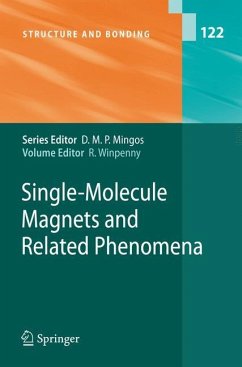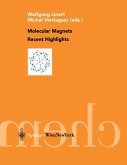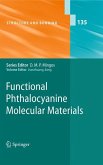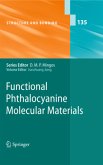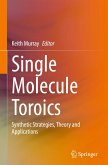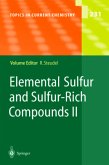From the reviews:
"The book succeeds at presenting the diversity of approaches required and used to understand and exploit single-molecule magnets (SMMs) ... . The references are exhaustive ... . For that reason alone it would be a good idea to have this book on hand in the laboratory. ... Overall, this book is a good collection of the work that has been done in the field of SMMs." -- Matthew P. Shores, Journal of the American Chemical Society, Vol. 129 (12), 2007)
From the reviews:
"In one sense, the book succeeds at presenting the diversity of approaches required and used to understand and exploit SMMs, be they chemical, physical, materials oriented, or theoretical. On the other hand, the book is dominated by the Mn12 cluster, the first species characterized as a single-molecule magnet. This is hardly surprising, since the cluster also displays the highest reported reorientation barrier in an isolable species. The chapter on spectroscopy focuses only on Mn12 and Fe8, while the essay concerning incorporation of SMMs into new materials only uses examples in which Mn12 is involved. The references are exhaustive and adequately cover the field to the middle of 2005. For that reason alone it would be a good idea to have this book on hand in the laboratory. With the burgeoning interest in the field, however, it is clear that an update will be needed soon. Overall, this book is a good collection of the work that has been done in the field of SMMs" -- Matthew P.Shores, Colorado State University, JA069806A, 10.1021/ja06906a
"The book succeeds at presenting the diversity of approaches required and used to understand and exploit single-molecule magnets (SMMs) ... . The references are exhaustive ... . For that reason alone it would be a good idea to have this book on hand in the laboratory. ... Overall, this book is a good collection of the work that has been done in the field of SMMs." -- Matthew P. Shores, Journal of the American Chemical Society, Vol. 129 (12), 2007)
From the reviews:
"In one sense, the book succeeds at presenting the diversity of approaches required and used to understand and exploit SMMs, be they chemical, physical, materials oriented, or theoretical. On the other hand, the book is dominated by the Mn12 cluster, the first species characterized as a single-molecule magnet. This is hardly surprising, since the cluster also displays the highest reported reorientation barrier in an isolable species. The chapter on spectroscopy focuses only on Mn12 and Fe8, while the essay concerning incorporation of SMMs into new materials only uses examples in which Mn12 is involved. The references are exhaustive and adequately cover the field to the middle of 2005. For that reason alone it would be a good idea to have this book on hand in the laboratory. With the burgeoning interest in the field, however, it is clear that an update will be needed soon. Overall, this book is a good collection of the work that has been done in the field of SMMs" -- Matthew P.Shores, Colorado State University, JA069806A, 10.1021/ja06906a
From the reviews:
"The book succeeds at presenting the diversity of approaches required and used to understand and exploit single-molecule magnets (SMMs) ... . The references are exhaustive ... . For that reason alone it would be a good idea to have this book on hand in the laboratory. ... Overall, this book is a good collection of the work that has been done in the field of SMMs." (Matthew P. Shores, Journal of the American Chemical Society, Vol. 129 (12), 2007)
From the reviews:
"In one sense, the book succeeds at presenting the diversity
of approaches required and used to understand and exploit
SMMs, be they chemical, physical, materials oriented, or
theoretical. On the other hand, the book is dominated by the
Mn12 cluster, the first species characterized as a single-molecule
magnet. This is hardly surprising, since the cluster also displays
the highest reported reorientation barrier in an isolable species.
The chapteron spectroscopy focuses only on Mn12 and Fe8,
while the essay concerning incorporation of SMMs into new
materials only uses examples in which Mn12 is involved.
The references are exhaustive and adequately cover the field
to the middle of 2005. For that reason alone it would be a good
idea to have this book on hand in the laboratory. With the
burgeoning interest in the field, however, it is clear that an
update will be needed soon. Overall, this book is a good
collection of the work that has been done in the field of SMMs"
Matthew P.Shores, Colorado State University, JA069806A, 10.1021/ja06906a
"The book succeeds at presenting the diversity of approaches required and used to understand and exploit single-molecule magnets (SMMs) ... . The references are exhaustive ... . For that reason alone it would be a good idea to have this book on hand in the laboratory. ... Overall, this book is a good collection of the work that has been done in the field of SMMs." (Matthew P. Shores, Journal of the American Chemical Society, Vol. 129 (12), 2007)
From the reviews:
"In one sense, the book succeeds at presenting the diversity
of approaches required and used to understand and exploit
SMMs, be they chemical, physical, materials oriented, or
theoretical. On the other hand, the book is dominated by the
Mn12 cluster, the first species characterized as a single-molecule
magnet. This is hardly surprising, since the cluster also displays
the highest reported reorientation barrier in an isolable species.
The chapteron spectroscopy focuses only on Mn12 and Fe8,
while the essay concerning incorporation of SMMs into new
materials only uses examples in which Mn12 is involved.
The references are exhaustive and adequately cover the field
to the middle of 2005. For that reason alone it would be a good
idea to have this book on hand in the laboratory. With the
burgeoning interest in the field, however, it is clear that an
update will be needed soon. Overall, this book is a good
collection of the work that has been done in the field of SMMs"
Matthew P.Shores, Colorado State University, JA069806A, 10.1021/ja06906a

